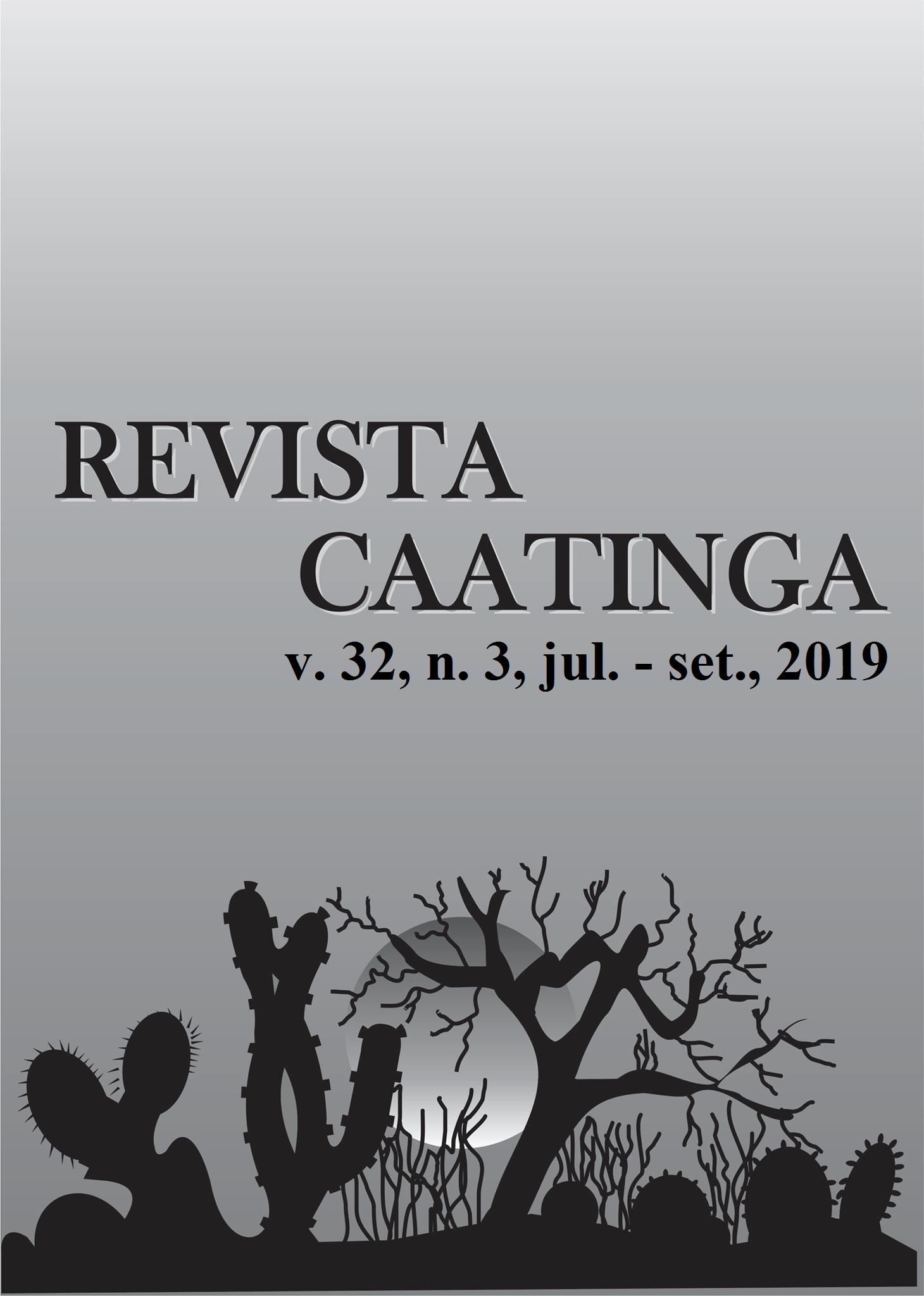FORAGE PRODUCTION AND PRESERVATION OF SPECIES BY ENRICHING CAATINGA WITH GRASSES AND THINNING AREAS INTO STRIPS
DOI:
https://doi.org/10.1590/1983-21252019v32n326rcKeywords:
Botanical composition. Massai grass. Buffel grass. Shading. Full sun exposure.Abstract
The objective of this study was to evaluate the thinning into strips and the enrichment with exotic grasses in a Caatinga area in order to maintain and increase the biodiversity of native vegetable species and forage production. Two studies were carried out—one in an area of Caatinga thinned into strips and one in an unmanipulated Caatinga area—during the rainy and rainy-dry season transition periods in 2016. The production of herbaceous biomass was evaluated, and the diversity and equability of the two areas were assessed through Shannon-Weaver (H’) and Pielou (J’) indexes. The establishment of massai and buffel grasses at the center and edges of the area thinned into strips was also evaluated. During the rainy season, the production of herbaceous biomass in the area thinned into strips and the unmanipulated area was 1,228 kg ha-1 and 833.33 kg ha-1, while during the rainy-dry transition period, it was 1,973 kg ha-1 and 836.00 kg ha-1, respectively. The indexes remained similar: H’ (1.86) and J’ (0.74) for the area thinned into strips, and H’ (1.77) and J’ (0.85) for the unmanipulated area. The massai grass presented better establishment and development than that by the buffel grass in the center and edges of the area thinned into strips. Thus, thinning into strips increases the biodiversity of an area, and this combined with enrichment through grasses increases the biomass of herbaceous forage.
Downloads
Downloads
Published
Issue
Section
License
Os Autores que publicam na Revista Caatinga concordam com os seguintes termos:
a) Os Autores mantêm os direitos autorais e concedem à revista o direito de primeira publicação, com o trabalho simultaneamente licenciado sob a Licença Creative Commons do tipo atribuição CC-BY, para todo o conteúdo do periódico, exceto onde estiver identificado, que permite o compartilhamento do trabalho com reconhecimento da autoria e publicação inicial nesta revista, sem fins comerciais.
b) Os Autores têm autorização para distribuição não-exclusiva da versão do trabalho publicada nesta revista (ex.: publicar em repositório institucional ou como capítulo de livro), com reconhecimento de autoria e publicação inicial nesta revista.
c) Os Autores têm permissão e são estimulados a publicar e distribuir seu trabalho online (ex.: em repositórios institucionais ou na sua página pessoal) a qualquer ponto antes ou durante o processo editorial, já que isso pode gerar alterações produtivas, bem como aumentar o impacto e a citação do trabalho publicado (Veja O Efeito do Acesso Livre).







